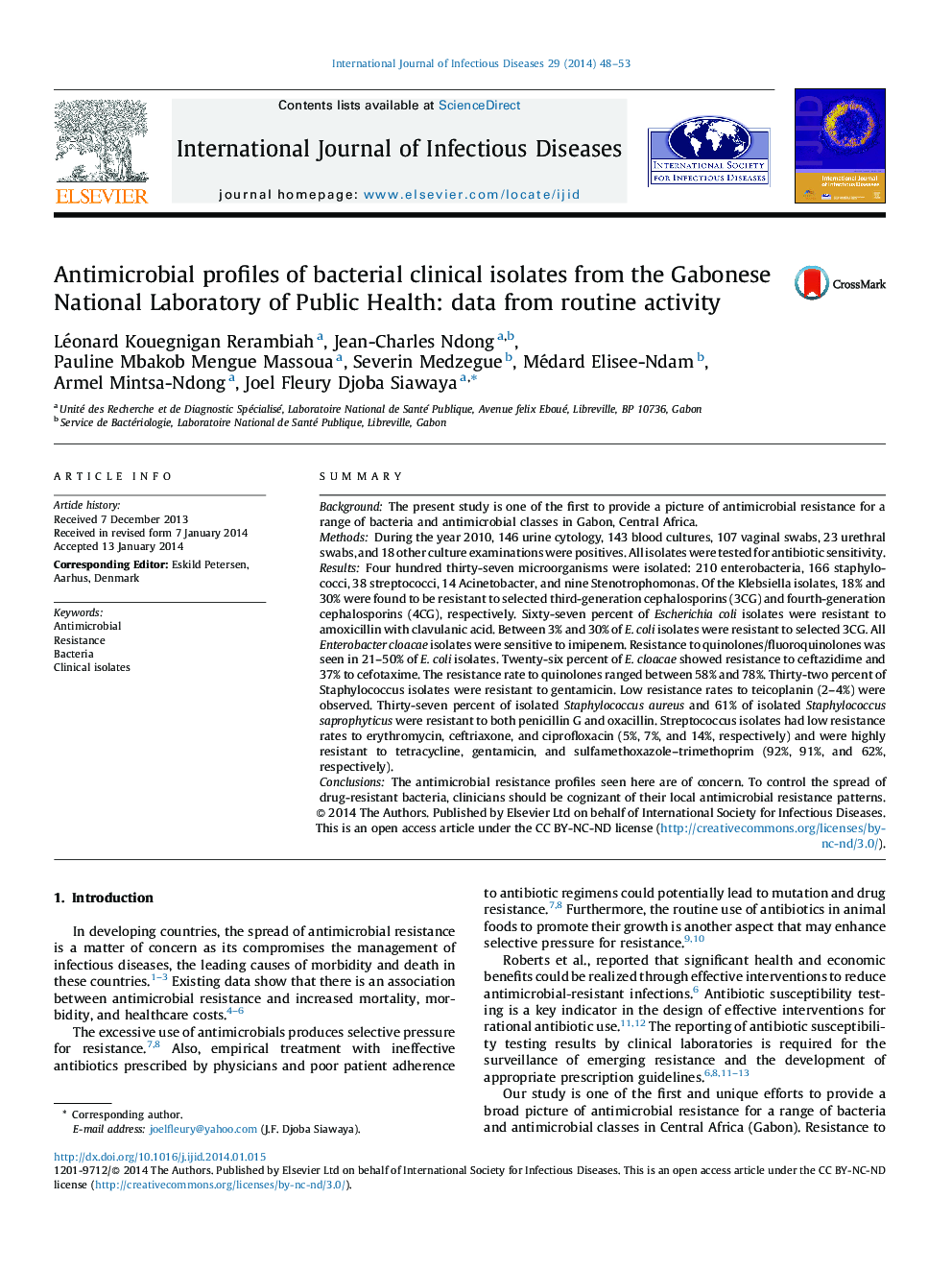| کد مقاله | کد نشریه | سال انتشار | مقاله انگلیسی | نسخه تمام متن |
|---|---|---|---|---|
| 3362325 | 1592066 | 2014 | 6 صفحه PDF | دانلود رایگان |
SummaryBackgroundThe present study is one of the first to provide a picture of antimicrobial resistance for a range of bacteria and antimicrobial classes in Gabon, Central Africa.MethodsDuring the year 2010, 146 urine cytology, 143 blood cultures, 107 vaginal swabs, 23 urethral swabs, and 18 other culture examinations were positives. All isolates were tested for antibiotic sensitivity.ResultsFour hundred thirty-seven microorganisms were isolated: 210 enterobacteria, 166 staphylococci, 38 streptococci, 14 Acinetobacter, and nine Stenotrophomonas. Of the Klebsiella isolates, 18% and 30% were found to be resistant to selected third-generation cephalosporins (3CG) and fourth-generation cephalosporins (4CG), respectively. Sixty-seven percent of Escherichia coli isolates were resistant to amoxicillin with clavulanic acid. Between 3% and 30% of E. coli isolates were resistant to selected 3CG. All Enterobacter cloacae isolates were sensitive to imipenem. Resistance to quinolones/fluoroquinolones was seen in 21–50% of E. coli isolates. Twenty-six percent of E. cloacae showed resistance to ceftazidime and 37% to cefotaxime. The resistance rate to quinolones ranged between 58% and 78%. Thirty-two percent of Staphylococcus isolates were resistant to gentamicin. Low resistance rates to teicoplanin (2–4%) were observed. Thirty-seven percent of isolated Staphylococcus aureus and 61% of isolated Staphylococcus saprophyticus were resistant to both penicillin G and oxacillin. Streptococcus isolates had low resistance rates to erythromycin, ceftriaxone, and ciprofloxacin (5%, 7%, and 14%, respectively) and were highly resistant to tetracycline, gentamicin, and sulfamethoxazole–trimethoprim (92%, 91%, and 62%, respectively).ConclusionsThe antimicrobial resistance profiles seen here are of concern. To control the spread of drug-resistant bacteria, clinicians should be cognizant of their local antimicrobial resistance patterns.
Journal: International Journal of Infectious Diseases - Volume 29, December 2014, Pages 48–53
